This post was submitted by Dave Forcucci, a freediver based in Washington State. Dave decided to buy an underwater speedometer and to test freedive fin efficiency. You can read the results of his extensive testing here.
It is difficult to imagine where we would be without the information available from the Internet. Back in the day when we relied on local dive shops for equipment the availability of freedive gear was very limited. Fortunately we still ventured underwater. Now with access to a world of freediving resources, we are able to fine-tune our gear and techniques. Of course before diving in, a freedive course is essential for safe and informed breath hold diving.
With our freediver course under our belt we are familiar with the different pieces of equipment, which thankfully are not many. This is why we like free diving to begin with. Now we are ready to go diving. Well maybe. You are deciding which mask fits best on your face, which snorkel feels best in your mouth and what flavor fins appeal to you and your budget. You can ask your dive buddies and your free dive instructor about which they prefer and you will, most likely, get a range of advice. But equipment is personal and we all choose what we believe will work for us, and like most things in life we make compromises.
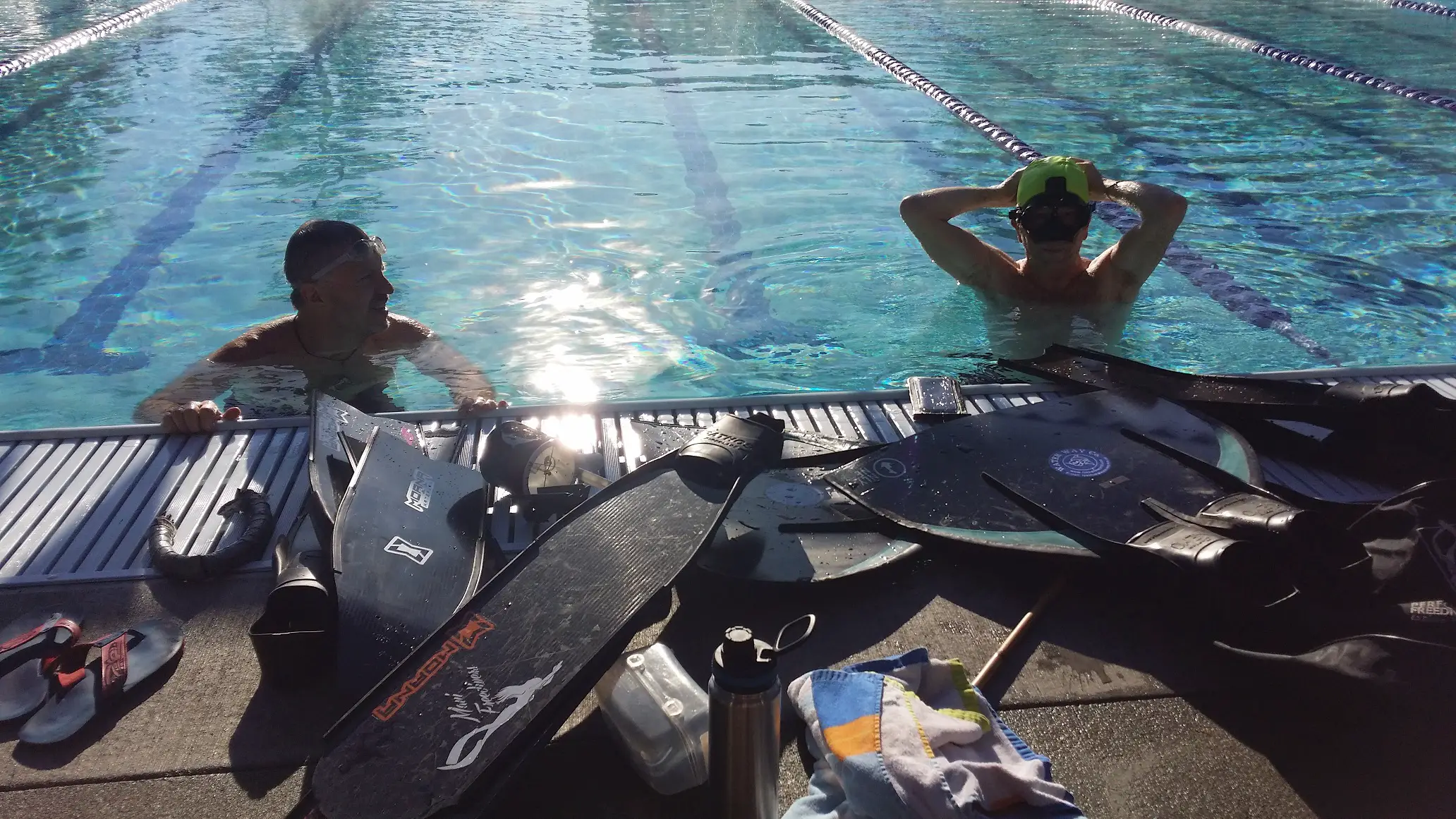
What you should know about freedive fins
In this piece we are only going to consider fins. And there are lots of choices out there. But basically you choose either a plastic blade or a composite blade that could be either fiberglass, carbon, or a mixture. Having a list of requirements is always a good thing before you go cyber shopping. These requirements are personal choices so I will use myself as an example with the understanding that yours may be very different. The requirements can be listed in order of priority, depending on who is doing the fin shopping.
A comfortable foot pocket is important and in a perfect world you could try on each brand and go for a swim. In reality we have to guess and hope it fits well. Next requirement: Blade angle. I learned from experience that it is easier to swim on the surface with a 20 degree angle or so between the blade and foot pockets. These days most bi-fin blades are manufactured with an angle but some are not. Likewise, monofins commonly have an angle between the foot pocket and blade, which is helpful for swmming and gliding. Unlike bi-fins, monofins typically do not have a bent blade, instead the foot pocket is modified to a 20 degree angle. One monofin manufacturer sells a monofin with a bent blade. This reduces the weight on your shoulder as you tote your fin to oceans and pools from 4 kg (9lbs) for a monofin with angled foot pockets to less than 2 kg (4.5 lbs) for a monifin with an angled blade. Which is more efficient in the water is yet to be determined. Other fin properties you need to think about before you buy are the stiffness: soft, medium and hard. And then of course there is durability, which is dependent on the type of material that the fin is made of. Last but not least: budget.
Measuring freedive fin efficiency
As we shell out hundreds and hundreds of dollars for fins we wonder whether this or that feature will really make a difference? Or maybe we just hope that paying more will get us more efficiency in the water. Fin performance is mostly subjective but I was pondering whether there is a way to empirically compare fin performance. Back on our beloved Internet I found a study on SCUBA fins that compared over a dozen fins using multiple measurements. It was way too involved for what I wanted to do but it gave me some ideas. The author of that study mentioned an underwater speedometer that sparked my curiosity. After another session on the Internet I had found an electronic and a mechanical underwater speedometer. I was amazed these were available and a guy living across the state from me made the mechanical one. The cost was reasonable and this gem would allow me do some empirical testing. The electronic version was out of stock with no demand for manufacturing more. It turned out the diver from Spokane had been testing SCUBA fins himself for over 20 years and his conclusion was that the bottom line on efficiency was max speed.
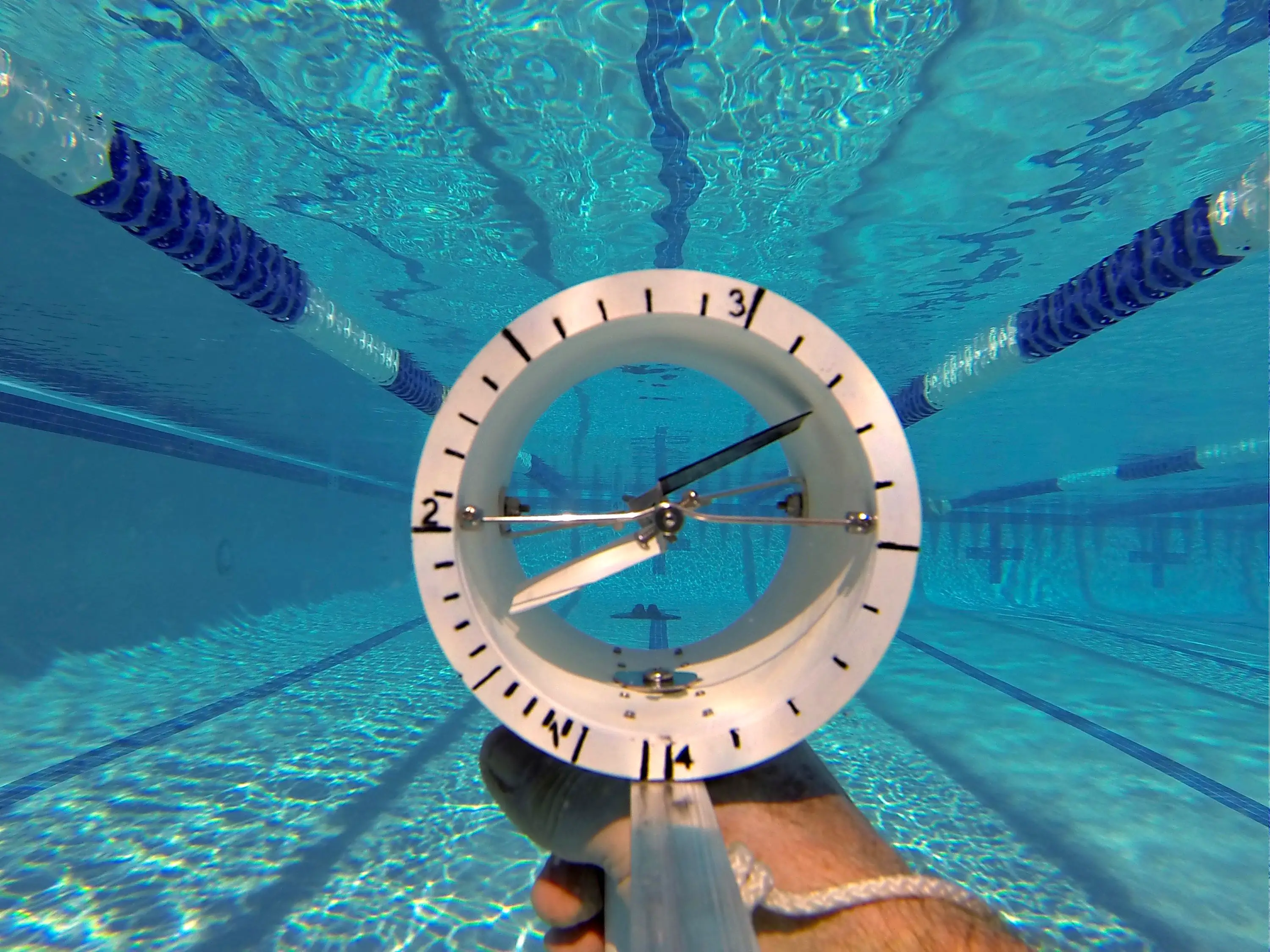
Others may suggest that kick cycles and other factors are important too, and they may be, but max speed would provide a standardized measure to compare fins. I videoed the speedometer gauge with a Gopro to make sure I had recorded the speed correctly. I could mention the various brands and flavors of fins I tested but the main characteristics are listed instead.
Results
| Fin type | Blade/stiffness | Blade material | cost (US$) | Speed (MPH) |
|---|---|---|---|---|
| Scuba/military | Short blade | Rubber | 50 | 2.7 |
| Freedive bi-fin | Two brands | Plastic | 100 | 2.9 – 3.0 |
| Freedive bi-fin | Medium | Fiberglass | 300 | 3.3 |
| Freedive bi-fin | Soft | Fiberglass | 150 | 3.3 |
| Freedive bi-fin | Soft | Fiber/Carbon | 250 | 3.3 |
| Freedive bi-fin | Soft | Carbon | 500 | 3.3 |
| Freedive bi-fin | Medium | Carbon | 500 | 3.3 |
| Freedive monofin model A | Medium | Fiberglass | 200 | 3.4 |
| Freedive monofin Model A | Soft | Fiberglass | 200 | 3.4 |
The main points of the results are that going from Plastic to composite gets you a 10% increase in efficiency. I can tell you from experience you might need that efficiency some day if you need to swim against our testy currents to get back to the boat. But surprisingly, whether the fin was fiberglass or carbon, soft or medium stiffness they all had the same efficiency. The monofin was a little faster but not as much as I expected. However, I felt like I could have used more room than a pool affords to really work the monofin to potential.

Based on these non-scientific but empirical results, I don’t need to spend the extra cash for carbon which is good for my budget and the robust fiberglass construction will handle about anything I or the sea could throw at it. As far as blade stiffness goes, I can choose either since they had the same max speed but I liked the soft blades. Soft blades have a wider range of resistance. Kicking normally at slow speeds was effortless compared to the medium bifins, which required more effort to get the fins moving. Of course this is important, since we need to conserve oxygen.
This was a fun experiment and I hope it helps you while you contemplate your next freedive fin. In our high-tech world we can get lost in the details. However most of the improvements in design may never be realized as we fin out to the next line dive or kelp bed. But if we believe a particular fin will give us an edge, even if only a psychological effect, that could translate to better performance and possibly survival. Just remember to peel off the soft #1 sticker.

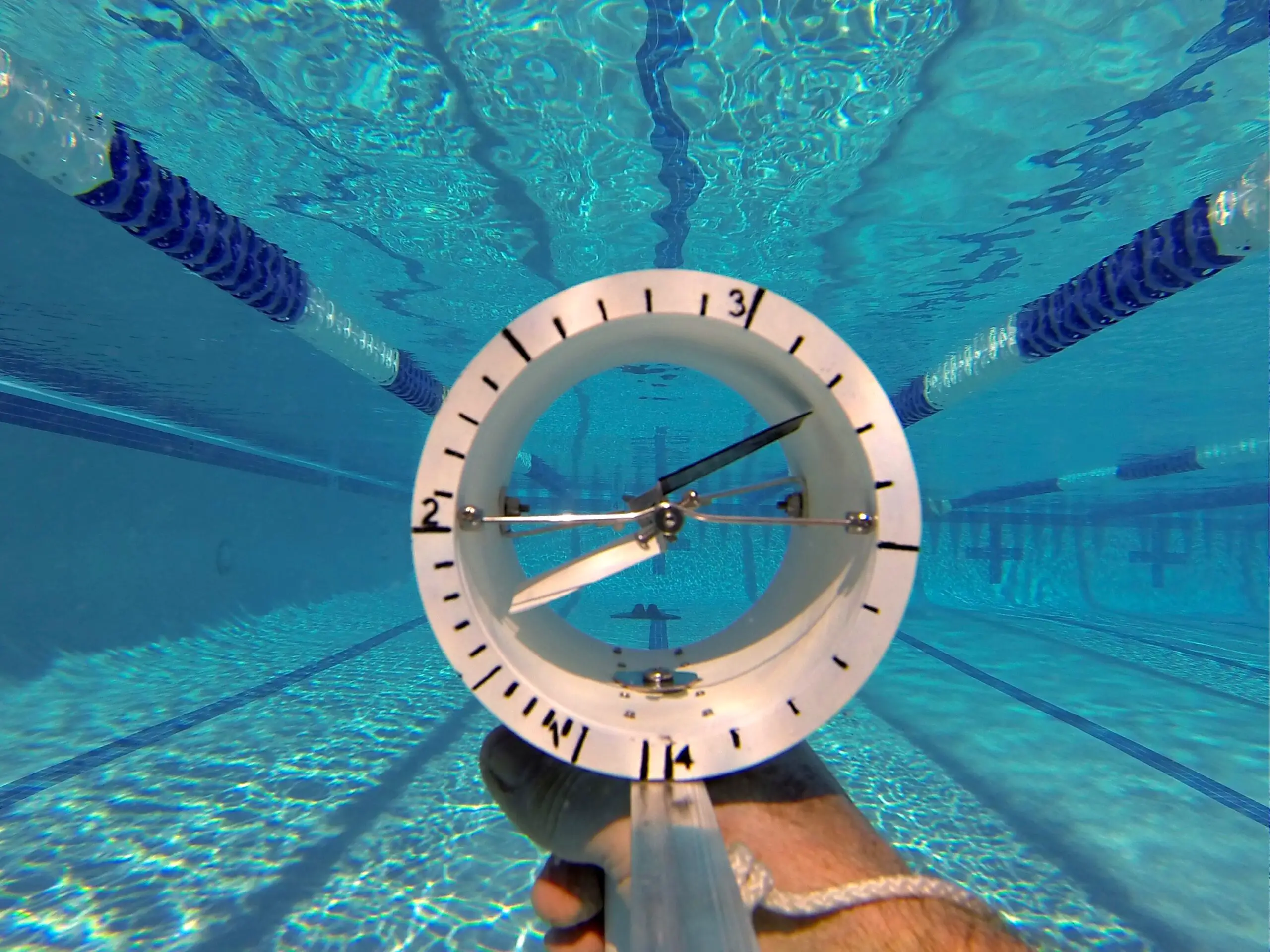
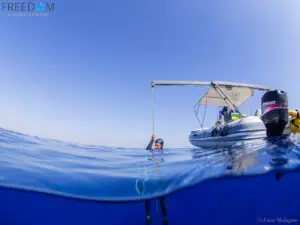
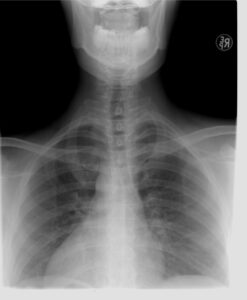
Hi,
Thanks very much for a really good article!
I just found your site and look forward to read more here 🙂
Thanks Terje, glad you enjoy it!
Pingback: What freediving fins angle should you be using? – Freediving Freedom